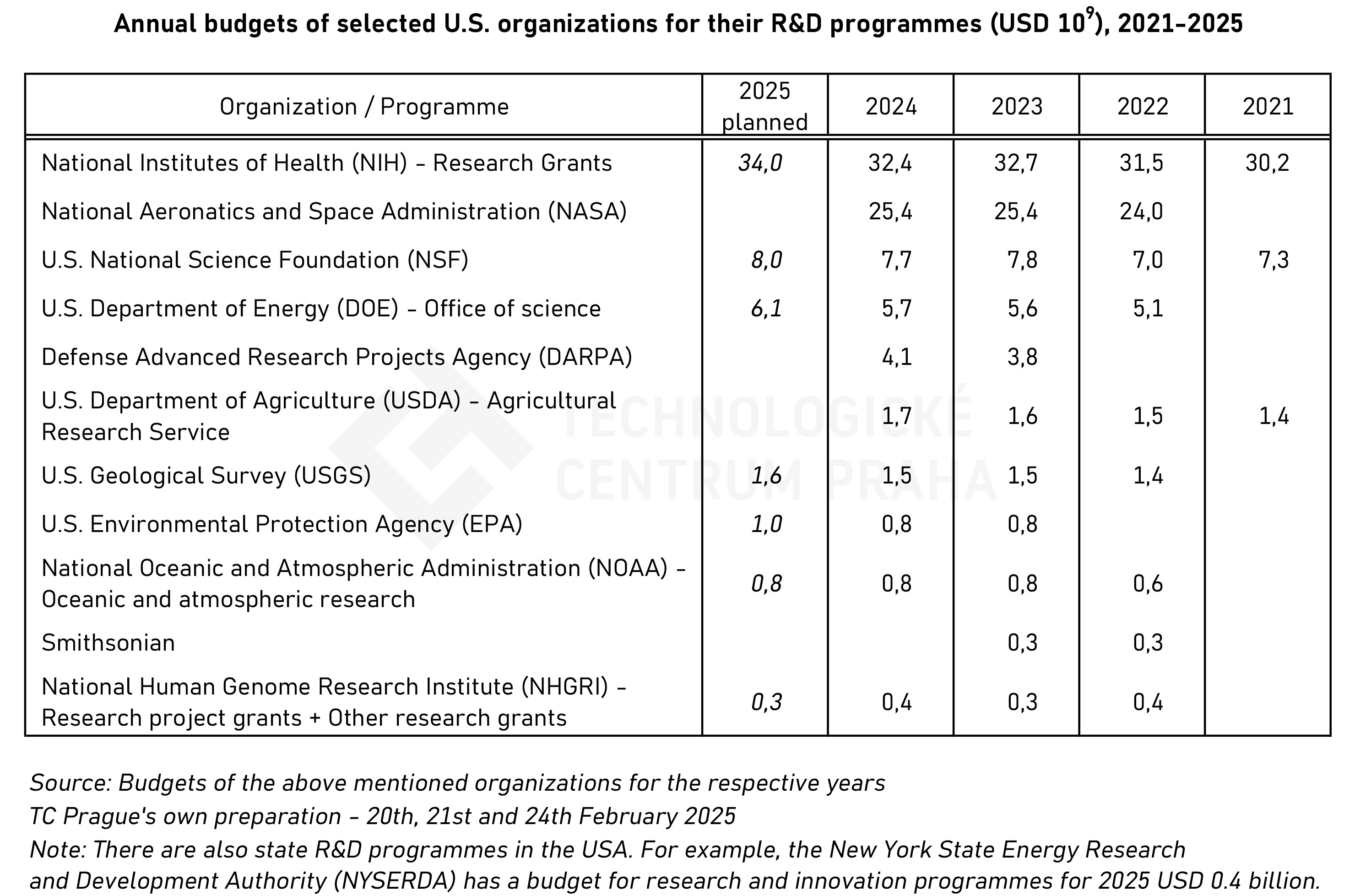EHRI-ERIC: Call for Applications - Conny Kristel Fellowship Programme (TNA)
05/08/2025

In the context of the Draghi report on EU competitiveness published in September 2024 and its follow-up implementing document, an EU Compass to regain competitiveness and secure sustainable prosperity, published at the end of January 2025, we consider it appropriate to briefly place Horizon Europe in the context of selected research programmes running in the USA, thus continuing the series of contributions on Horizon Europe in the global and European context.
To do so, we studied budget execution reports and budget requests from selected U.S. organizations with the highest research programme budgets. The table below shows the annual budgets of major U.S. research programmes. These total $80 billion in 2023 (at a long-term exchange rate of €1 = $1.04, let's consider € and US$ at parity for the purposes of this paper). This essentially corresponds to a total Horizon Europe budget for the entire 2021-2027 period of €95.5 billion (plus an additional €1.4 billion for the Euratom programme for the 2021-2025 period). According to the European Commission's eCORDA database as of 21 January 2025, the net EU contribution to Horizon Europe projects launched in 2023 was €14.9 billion, and €13.1 billion for those launched in 2024, i.e. around five times less. This comparison thus shows that the intended budget of the forthcoming EU's 10th Framework Programme of €220 billion is more than justified. However, the question arises whether, given the current geo-economic and geopolitical situation, the EU will have sufficient funds to increase the FP10 budget.

The budgets of other EU research and innovation programmes, with which we have compared Horizon Europe in previous posts, amount to several billion € for the whole 2021-2027 period – the European Defence Fund €7.9 billion, Digital Europe €7.6 billion, the Programme for the Environment and Climate Action (LIFE) €5.4 billion, the EU4Health Programme €5.3 billion, Creative Europe €2.4 billion. The Innovation Fund for the period 2020-2030 is expected to operate with a budget of around €10 billion (depending on the price of EU ETS allowances). Summing up the budgets of these six programmes gives a further €38 billion, i.e. an average of €5.5 billion per year. If we add this amount to the net EU contribution for Horizon Europe projects starting in 2023 or 2024, we can talk about a total of €20 billion claimed on average per year by participants in Horizon Europe projects and 6 other smaller selected EU programmes. This represents NASA's annual budget. At the same time, it is still four times less than the annual sum of the R&D expenditure of 11 selected US programmes.
We can also note that the seven-year budgets of the 6 smaller selected EU programmes (the 10-year budget for the Innovation Fund) roughly correspond to the annual expenditure of medium-sized US research programmes.
To illustrate the context, let us recall some data from the World Bank. According to the World Bank, the population of the European Union in 2023 was 450 million, while the population of the USA was 335 million. Meanwhile, the EU produced goods and services worth $18.6 x 1012 in 2023, while the USA produced goods and services worth $27.7 x 1012. Gross domestic product expressed in purchasing power parity per capita was one quarter higher in the USA than in the EU.
Summary:
Together, the 11 largest US research programmes selected work with an annual amount equal to the entire Horizon Europe programme for seven years. Even medium-sized US programmes operate with annual budgets that also match the seven-year budgets of smaller European Union programmes. In the light of these findings, the proposed increase in the budget of the EU's 10th Framework Programme to €220 billion seems a necessary step to maintain at least the current level of EU’s competitiveness.
Author: Vladimír Vojtěch, TC Prague, vojtech@tc.cz, 24.02.2025
05/08/2025
01/08/2025
24/07/2025